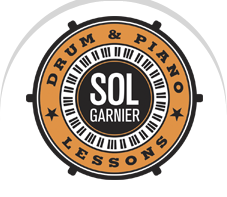I was watching an interview of Michael Douglas and Alan Arkin. In it, Mr. Arkin was asked what he learnt from Mr. Douglas from filming together the series”The Kominsky method”. Alan Arkin answered that it wasn’t necessarily about learning as much as what he appreciated in his partner. He continued to say that he really admired Michael Douglas’s flexibility. What did he mean by that? Well, let’s talk about it.
I train a lot of people to become professional, yes, but also people who just want to be better on their instrument. Of course, I give them some tools: technique, speed, versatility, studies of styles, dynamics, but I also try to put those tools into a musical context for them. That’s the flexibility. Playing the same rhythm all throughout a song is great. But what about a little change, a little accent, a small peak in the wave? How does one do that? And where do you place it? And what tools would be appropriate for that particular moment? That’s where flexibility comes into play. Do you have the tool? Good. Do you recognize the situation? Ok. Do you think the tool fits the situation? Great! Now can you execute it so that it’ll flow perfectly into the music? Ah! That’s the big one right there because the intellectual stuff can be ready but you might be unable to execute it on the spot.
I spent my whole training in music to be flexible, to adapt as quickly and efficiently as possible to any musical situation. It is not easy. You sometimes step into some real head scratchers. For example, illustrating classical music with a drum kit but very quietly because you’re in a church with just a grand piano and 2 singers. It was my main gig for 20 years, twice a week.
Or punctuating someone else’s performance on a tight rope or while they’re juggling pins and keeping the music flowing. That’s what I did when I was playing for a circus. Tough stuff! But fun!
Yes, it is fun to be flexible. Let’s not forget. The better you are, the more flexible you become and the more fun it is to confront your skills to different situations. I encourage people who study instruments to develop just that: flexibility. This way they can share the art they love so much with a wide catalog of players and audiences.
